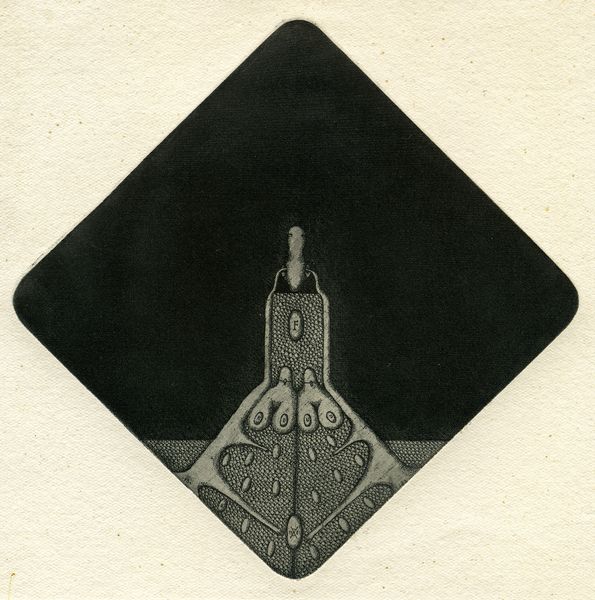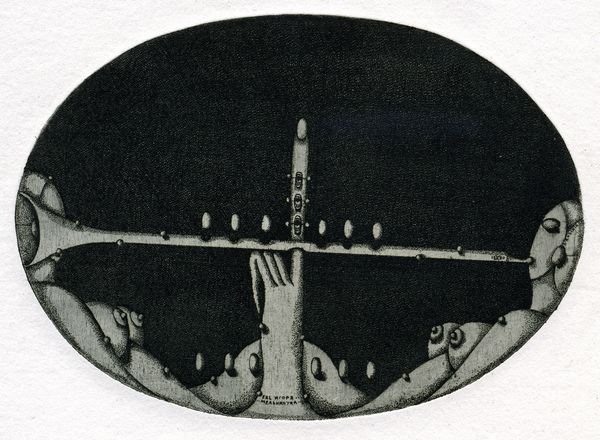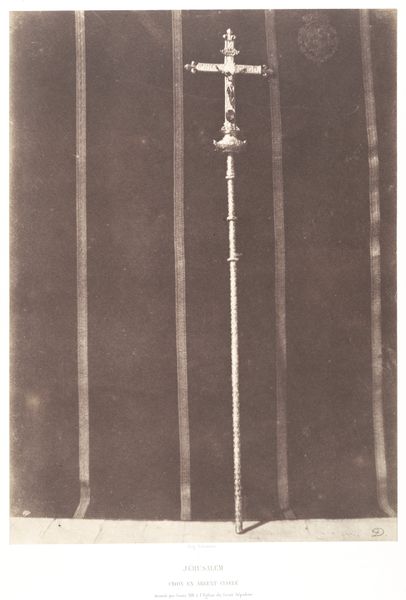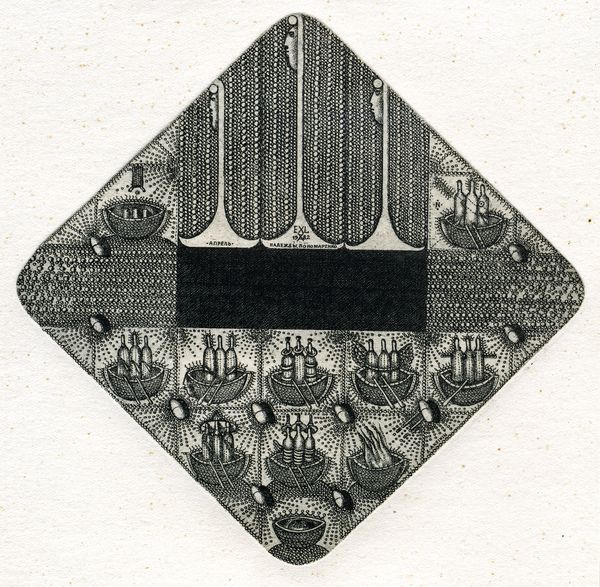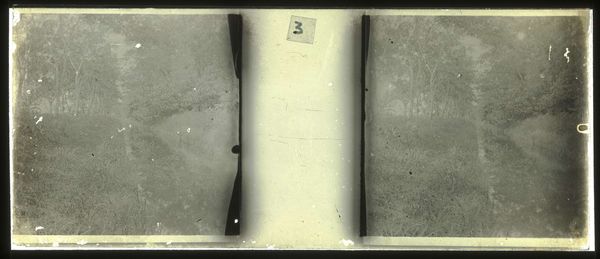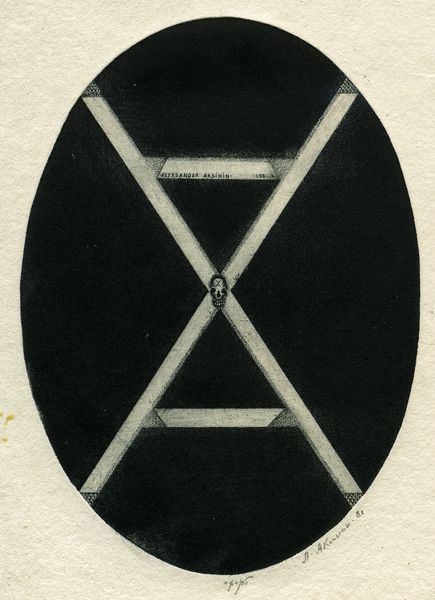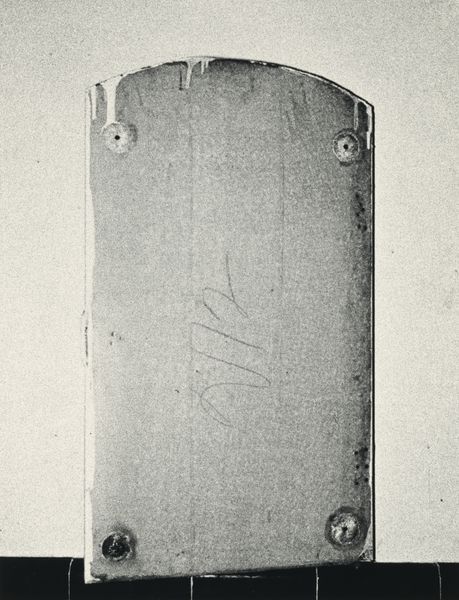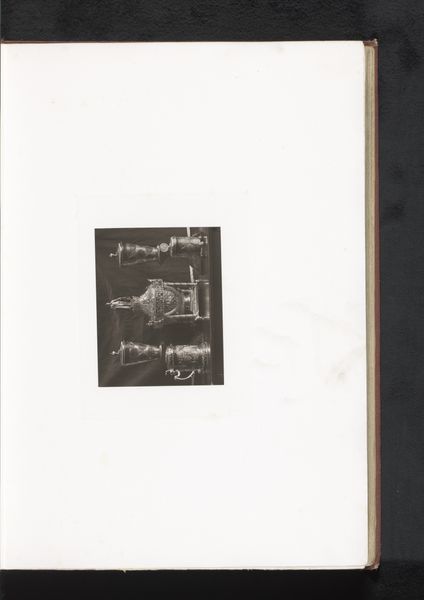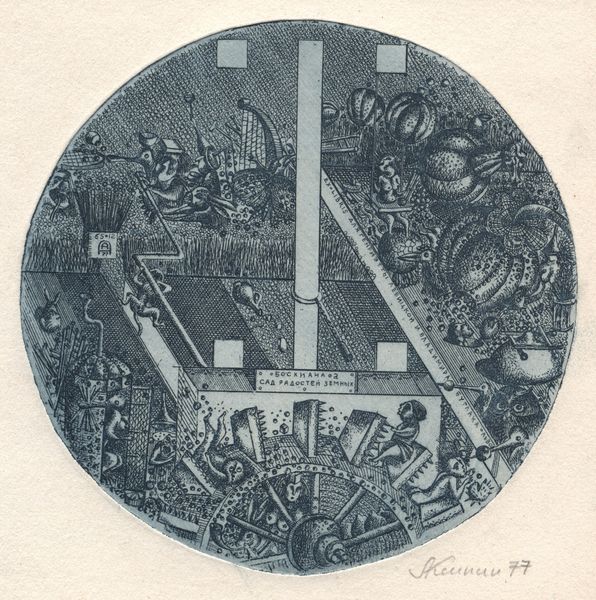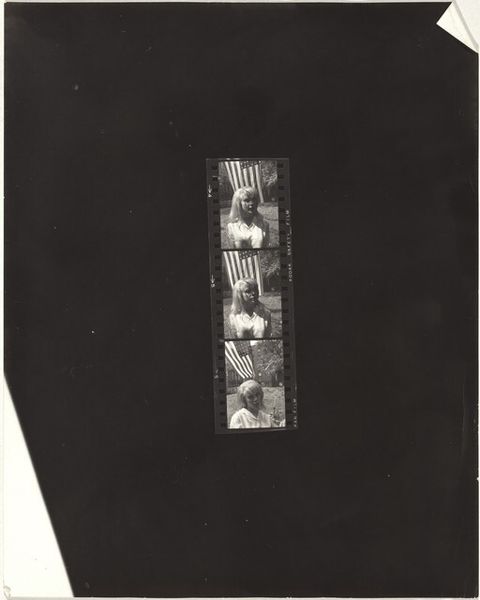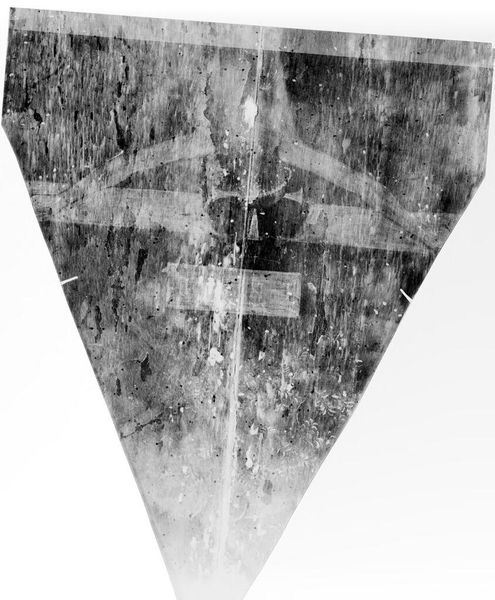
drawing, paper, ink
#
drawing
#
asian-art
#
paper
#
ink
#
geometric
#
line
Copyright: Oleksandr Aksinin,Fair Use
Editor: Here we have "Exlibris Od Lu Din Senu" created in 1981 by Oleksandr Aksinin, using ink on paper. The geometry immediately grabs you, it is intriguing how the artist arranged this seemingly simple layout into a surreal depiction of sorts. What strikes you most about this work? Curator: The artist employs several intriguing methods of spatial organization here. Consider the stark contrast between the textured void and precise, linear elements, like the bridge or horizon line bisecting the square orientation. How do these opposing formal qualities guide your reading? Editor: I suppose the sharp lines almost seem to dissect the darkness; they add an architectural element which makes me curious about the geometric figures. Curator: Precisely. Observe the structure's repetition and internal arrangement: how does that repeated octagonal figure behave as a module, creating a dialogue across the artwork? Consider how each compartment relates to the other; the arrangement of lines and blocks within. Does the geometric nature and the material feel symbolic in any way? Editor: It’s definitely making me question the purpose and relationship of these forms within this… structure, the piece as a whole. Maybe they point towards order amidst chaos, or at least structured chaos? It is something that stands out considering what was happening in Eastern Europe during this time. Curator: Indeed, your interpretation connects the intrinsic with extrinsic elements that enhance the overall experience of the art. Notice, too, how these layered contrasting principles invite us to analyze our own perceptive framework. Editor: Right, so it’s the formal language and our analytical observations that become equally valuable. Curator: Exactly. That focus then shifts from pure observation toward our way of contextualizing what we experience when seeing art.
Comments
No comments
Be the first to comment and join the conversation on the ultimate creative platform.
